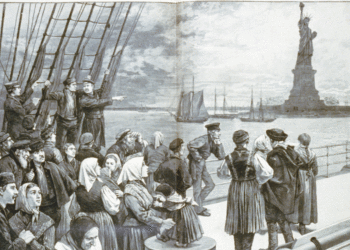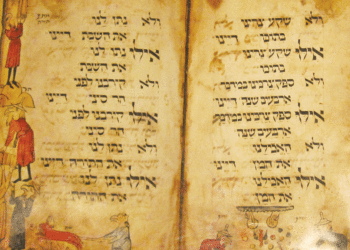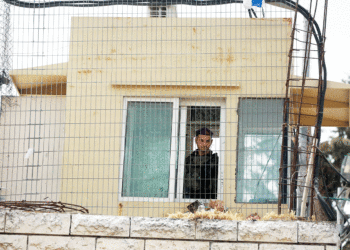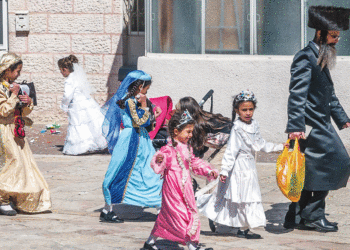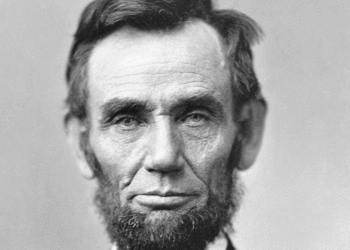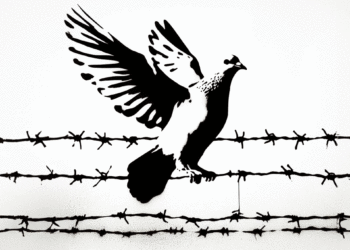The ‘post-9/11 world’ is really two worlds of attitude and action
By AMY EILBERG
Amidst the din of political speech this week, the nation will engage in some collective moments of quiet, contemplating the 10th anniversary of Sept. 11, 2011. All will agree that the events of 9/11 changed our lives, and changed the world radically. But there are two distinct narratives about how to understand the post-9/11 world.
A Jewish View
The first narrative emerged in the immediate aftermath of the 9/11 attacks, as Americans reached out to one another in shared grief, shock, and pain. As is often the case following disasters, individuals sought connection with one another, craved the solace of religious communities, and celebrated the lives of those lost. The photos posted of loved ones, in the desperate hope of finding survivors, conveyed the depth of love and connection between those lost and those left behind.
The New York Times profiles of the victims evocatively conveyed the beauty and uniqueness of each life lost, highlighting the particular gifts of each person, and the web of relationship in which his or her life was embedded. In shared grief, we needed one another for comfort, having come to learn that we Americans were not immune to the kinds of attacks that have threatened many other areas of the world. We came together in shock and vulnerability, holding our loved ones close, and reverently remembering acts of heroism and the terrible sacrifices of victims and their families.
The second narrative emerged all too soon. Rather than build on the remarkable sense of solidarity that had emerged among Americans following the attacks, or using the attacks to generate collaboration with other nations, our country was led into two wars, leading to many more sacrifices and more losses.
While most Americans supported military action to address the terrorist threat, the military response was accompanied by an understandable but primitive human instinct. In the face of threat, our leaders declared the world to be divided into “us” and “them,” “those with us” and “those against us,” as if to destroy the “enemy” would bring us comfort in our sorrow. The desperately needed comfort did not come. Americans are more afraid than ever before, and more suspicious of the presumed “other” in our midst — people of different races, religions, or ethnic backgrounds, most especially Muslims.
The collaborative, or “tend and befriend,” instinct gave rise to an unprecedented blossoming of interfaith dialogue work around our country and around the world. Muslim Americans reached out to their neighbors and to community institutions, to protect themselves from the violence bred of hate and polarization, but also in a genuine effort to know and be known, to deepen their engagement in the communities in which they lived.
Countless programs of interfaith dialogue work sprouted around the country — some large and some small, some educational, some service-oriented, some emphasizing the building of relationships across the religious divide. These programs have produced innumerable new connections among people, a tremendous amount of new learning about the many religions present in America, much collaborative social action work, and stronger communities.
The “fight” instinct flowered as well, as well-organized groups of hate-mongers have capitalized on Americans’ fears of international extremism. Purposefully confusing the distorted political ideology of a few with the beliefs of the vast majority of Muslims, well-funded misinformation experts have packaged and disseminated a world view portraying Muslims and Islam as a mortal threat to “the West.”
Consequently, Islamophobic rhetoric has moved from the extremist fringe to mainstream political discourse. The U.S. Congress has held hearings “investigating” the notion that all American Muslims and Muslim institutions support and nurture terrorists. In a triumph of fear-mongering over reason, states around the country have enacted so-called “anti-shariah” laws, a hate-filled response to a non-existent problem, as if the practice of Islamic religious ritual represents a terrorist threat. A 2010 Washington Post-ABC News poll indicated that 49 percent of Americans held an unfavorable view of Islam, a significant increase from 39 percent in October of 2002, so much closer to the events of 9/11.
The “post-9/11 world” is really two worlds of attitude and action. One worldview recognizes shared vulnerability in a frightening world, moving us all to more relationship-building, learning, and collaboration in building our communities and our country. The other worldview turns our fear into suspicion and prejudice, leading us to create more polarization, divisiveness and violence in word and deed against those presumed different from “us.”
In which post-9/11 world do you want to live? What are you doing to help create and strengthen such a world?
***
Rabbi Amy Eilberg directs interfaith dialog programs in the Twin Cities, including at the Jay Phillips Center for Interfaith Learning and the St. Paul Interfaith Network.
This article originally appeared on the YourVoices blog on StarTribune.com.









